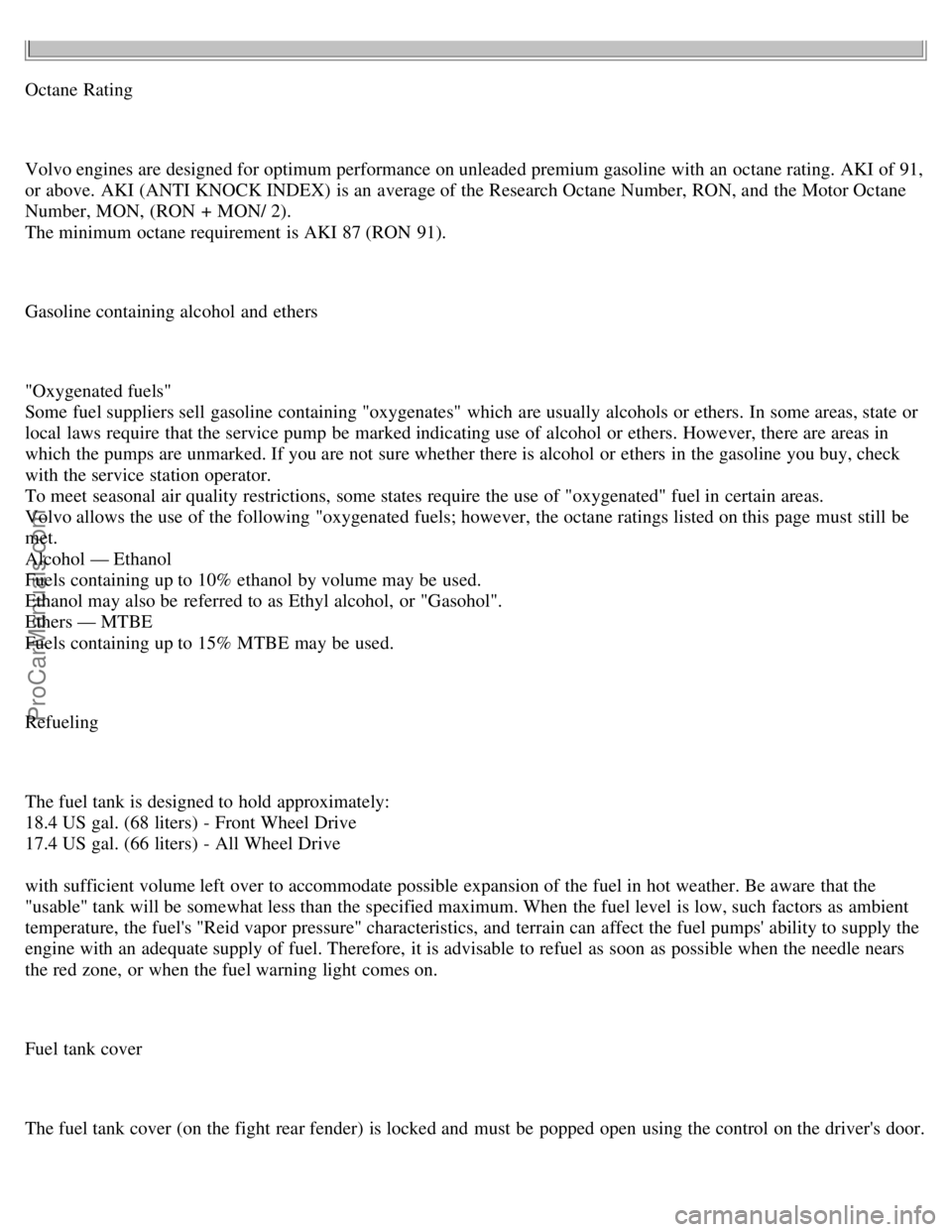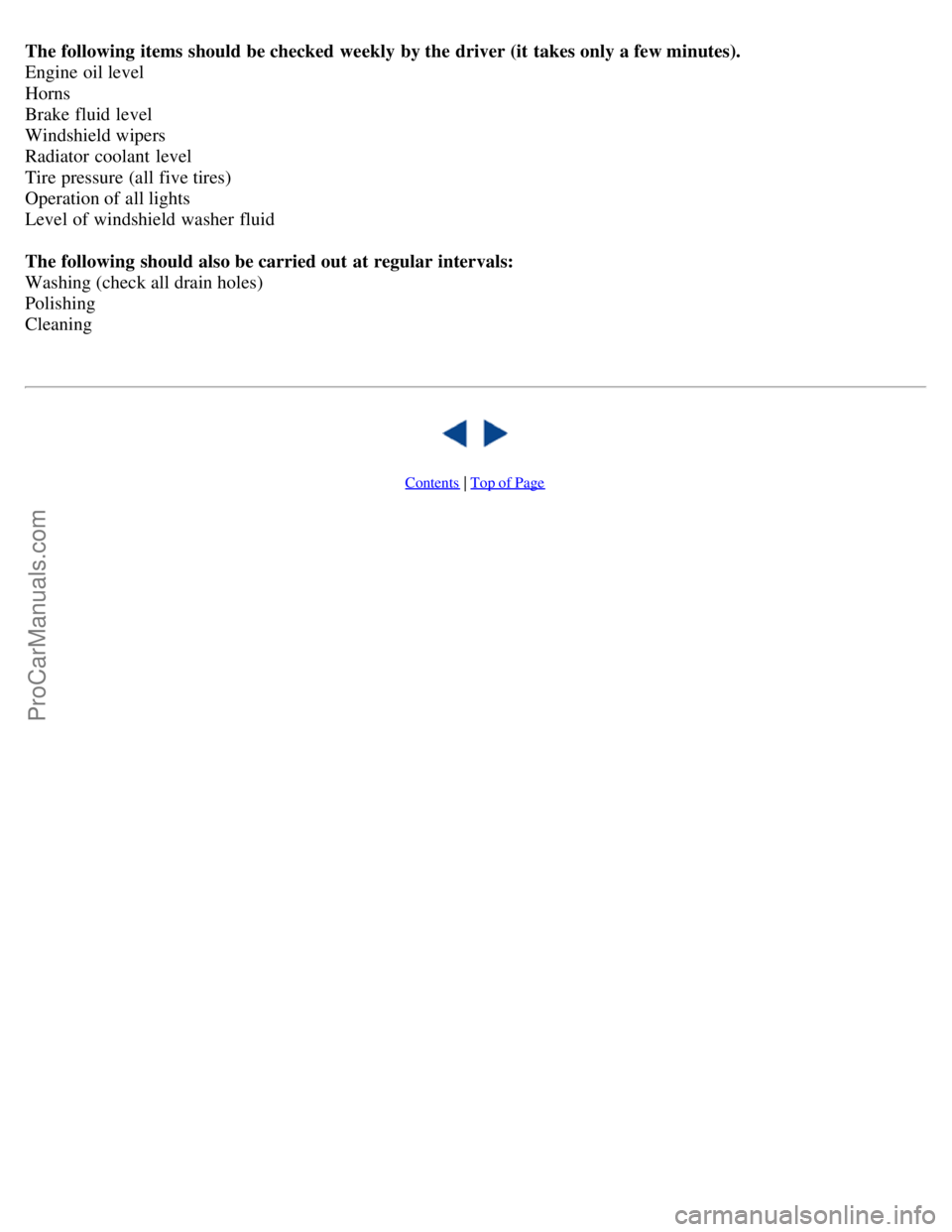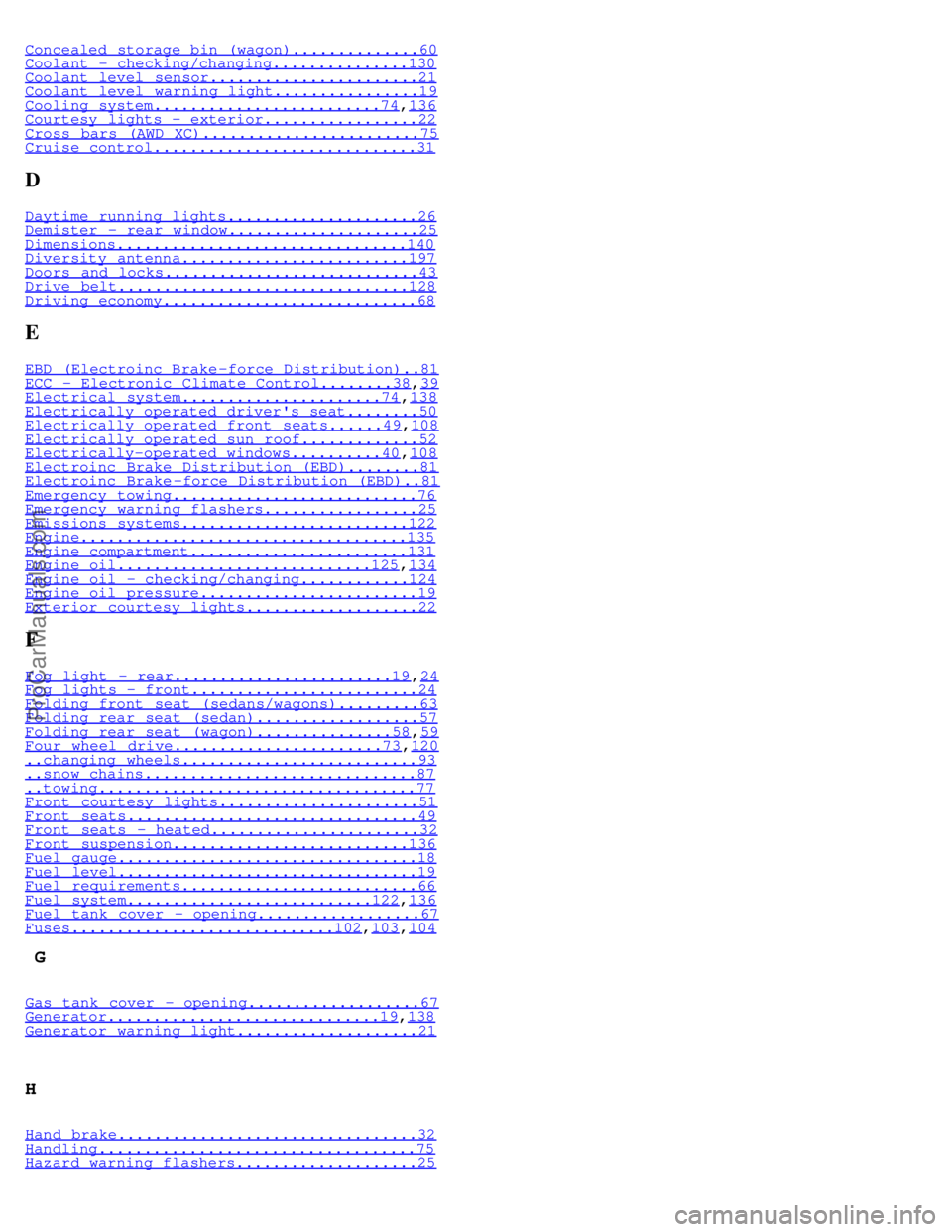check engine light VOLVO V70 1999 Owners Manual
[x] Cancel search | Manufacturer: VOLVO, Model Year: 1999, Model line: V70, Model: VOLVO V70 1999Pages: 61, PDF Size: 0.88 MB
Page 19 of 61

Octane Rating
Volvo engines are designed for optimum performance on unleaded premium gasoline with an octane rating. AKI of 91,
or above. AKI (ANTI KNOCK INDEX) is an average of the Research Octane Number, RON, and the Motor Octane
Number, MON, (RON + MON/ 2).
The minimum octane requirement is AKI 87 (RON 91).
Gasoline containing alcohol and ethers
"Oxygenated fuels"
Some fuel suppliers sell gasoline containing "oxygenates" which are usually alcohols or ethers. In some areas, state or
local laws require that the service pump be marked indicating use of alcohol or ethers. However, there are areas in
which the pumps are unmarked. If you are not sure whether there is alcohol or ethers in the gasoline you buy, check
with the service station operator.
To meet seasonal air quality restrictions, some states require the use of "oxygenated" fuel in certain areas.
Volvo allows the use of the following "oxygenated fuels; however, the octane ratings listed on this page must still be
met.
Alcohol — Ethanol
Fuels containing up to 10% ethanol by volume may be used.
Ethanol may also be referred to as Ethyl alcohol, or "Gasohol".
Ethers — MTBE
Fuels containing up to 15% MTBE may be used.
Refueling
The fuel tank is designed to hold approximately:
18.4 US gal. (68 liters) - Front Wheel Drive
17.4 US gal. (66 liters) - All Wheel Drive
with sufficient volume left over to accommodate possible expansion of the fuel in hot weather. Be aware that the
"usable" tank will be somewhat less than the specified maximum. When the fuel level is low, such factors as ambient
temperature, the fuel's "Reid vapor pressure" characteristics, and terrain can affect the fuel pumps' ability to supply the
engine with an adequate supply of fuel. Therefore, it is advisable to refuel as soon as possible when the needle nears
the red zone, or when the fuel warning light comes on.
Fuel tank cover
The fuel tank cover (on the fight rear fender) is locked and must be popped open using the control on the driver's door.
ProCarManuals.com
Page 20 of 61

Open fuel filler cap slowly during hot eather conditions.
CAUTION:
Do not refuel with the engine running. Turn the ignition off or to position I. If the ignition is on, an incorrect
reading could occur in the fuel gauge.
Allow for fuel expansion by not overfilling the tank. Overfilling could also cause damage to the emission control
systems.
Avoid spilling gasoline during refueling. Gasolines containing alcohol can cause damage to painted surfaces,
which may not be covered under the New Vehicle Limited Warranty.
Do not use gasoline containing methanol (methyl alcohol, wood alcohol). This practice can result in vehicle
performance deterioration and can damage critical parts in the fuel system. Such damage may not be covered under
the New Vehicle LimitedWarranty.
* If the fuel filler cap is not closed tightly or if the engine is running when the car is refueled, the Malfunction
Indicator Lamp may indicate a fault. However, your vehicle's performance will not be affected. Use only Volvo
original or approved fuel filler caps. pg. 68 Driving economy
Economical driving conserves natural resources
Better driving economy may be obtained by thinking ahead, avoiding rapid starts and stops and adjusting the speed of
your vehicle to immediate traffic conditions. Observe the following rules:
Bring the engine to normal operating temperature as soon as possible by driving with a light foot on the accelerator
pedal for the first few minutes of operation. A cold engine uses more fuel and is subject to increased wear.
Whenever possible, avoid using the car for driving short distances. This does not allow the engine to reach normal
operating temperature.
Drive carefully and avoid rapid acceleration and hard braking.
Do not exceed posted speed limit.
Avoid carrying unnecessary items (extra load) in the car.
Maintain correct tire pressure. Check tire pressure regularly (check when tires are cold).
Remove snow tires when threat of snow or ice has ended.
Note that roof racks, ski racks, etc., increase air resistance and thereby fuel consumption.
Avoid using automatic transmission kick-down feature unless necessary.
Avoid using the air conditioning when it is not required. When engaged, the air conditioner's compressor places an
additional load on the engine. However, please note that fuel consumption is lower with the air conditioning on than it
is when driving with the air conditioning switched off and the windows down.
If your car is equipped with the optional Trip Computer, utilizing the fuel consumption modes can help you "learn"
how to drive more economically.
Other factors which decrease gas mileage are:
Worn or dirty spark plugs
ProCarManuals.com
Page 42 of 61

The following items should be checked weekly by the driver (it takes only a few minutes).
Engine oil level
Horns
Brake fluid level
Windshield wipers
Radiator coolant level
Tire pressure (all five tires)
Operation of all lights
Level of windshield washer fluid
The following should also be carried out at regular intervals:
Washing (check all drain holes)
Polishing
Cleaning
Contents | Top of Page
ProCarManuals.com
Page 56 of 61

Concealed storage bin (wagon)..............60Coolant - checking/changing...............130Coolant level sensor.......................21Coolant level warning light................19Cooling system.........................74,136Courtesy lights - exterior.................22Cross bars (AWD XC)........................75Cruise control.............................31
D
Daytime running lights.....................26Demister - rear window.....................25Dimensions................................140Diversity antenna.........................197Doors and locks............................43Drive belt................................128Driving economy............................68
E
EBD (Electroinc Brake -force Distribution)..81ECC - Electronic Climate Control........38,39Electrical system......................74,138Electrically operated driver's seat........50Electrically operated front seats......49,108Electrically operated sun roof.............52Electrically-operated windows..........40,108Electroinc Brake Distribution (EBD)........81Electroinc Brake -force Distribution (EBD)..81Emergency towing...........................76Emergency warning flashers.................25Emissions systems.........................122Engine....................................135Engine compartment........................131Engine oil............................125,134Engine oil - checking/changing............124Engine oil pressure........................19Exterior courtesy lights...................22
F
Fog light - rear........................19,24Fog lights - front.........................24Folding front seat (sedans/wagons).........63Folding rear seat (sedan)..................57Folding rear seat (wagon)...............58,59Four wheel drive.......................73,120..changing wheels..........................93..snow chains..............................87..towing...................................77Front courtesy lights......................51Front seats................................49Front seats - heated.......................32Front suspension..........................136Fuel gauge.................................18Fuel level.................................19Fuel requirements..........................66Fuel system...........................122,136Fuel tank cover - opening..................67Fuses.............................102,103,104
G
Gas tank cover - opening...................67Generator..............................19,138Generator warning light....................21
H
Hand brake.................................32Handling...................................75Hazard warning flashers....................25
ProCarManuals.com